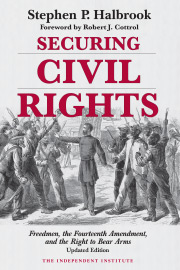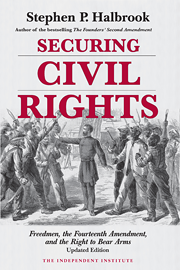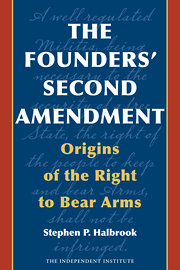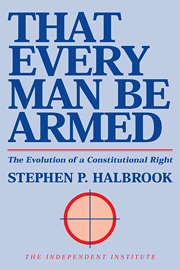Pundits have tried to read the tea leaves following the argument in the Supreme Court in Garland v. VanDerStok on October 8. In its Final Rule, ATF expanded the definition of “firearm” beyond what Congress provided in the Gun Control Act (GCA), and it expanded the definition of “frame or receiver” beyond the agency’s own definition that was on the books since 1968. In the argument, serious questions were raised about the extent to which an agency may revise a criminal statute.
That concern was expressed right at the beginning when Justice Thomas asked Solicitor General Prelogar whether the regulation “cover[s] all of Chapter 44,” which is the GCA portion of 18 U.S.C. (the federal criminal code), and whether it “appl[ies] under 924,” which is the GCA section that provides criminal penalties. Prelogar’s response was “yes” to both. So whether a person is committing a felony depends on whether the more narrow definition of “firearm” enacted by Congress, or the broader definition adopted by ATF, applies.
Justice Kavanaugh probed in detail into the implications of the agency’s expansion of the reach of the criminal law. Expressing concern about mens rea, he noted that “this is an agency regulation that broadens a criminal statute beyond what it had been before.” “So what about the seller,” he asked “who is truly not aware ... that they are violating the law and gets criminally charged?”
Prelogar responded that the requirements of having a license and of serializing firearms are subject to a “willfulness” requirement (see § 924(a)(1)(D)), but not conducting a background check only requires “knowledge” (§ 924(a)(5)). Under the “knowing” standard, a person need not know of a legal duty but simply knows that he didn’t conduct the background check.
But not to worry, Prelogar assured the Court, “on the background check, if you have a seller out there who wants guidance about whether, with respect to particular types of products, ... the person can seek a classification from ATF.” But that presupposes that you even know to ask for a “mother may I” classification letter from ATF. And as persons in the industry are painfully aware, ATF may take up to a year to issue a letter, if it responds at all. More fundamentally, that presupposes that the agency itself, rather than the statute, determines what is lawful.
So, Justice Kavanaugh continued, "you truly believe you’re not violating the law, could you be charged under that provision?” Prelogar responded: “As a theoretical possibility, I think only with respect to background checks, it’s possible you could.... I don’t think the government would be likely to charge someone in that kind of situation.”
That’s an extremely naive assurance. Why would ATF not cause the prosecution of a person merely because he “truly believed” he was not violating the law? Countless persons have been subjected to GCA prosecutions without any regard to whether they understood the requirements of the law or, even more so, ATF’s complex regulations.
While many federal prosecutors use good judgment in whether to initiate prosecutions, there are plenty who are interested in their batting average. In U.S. v. Moore, recently decided by the Eleventh Circuit, Judge Barbara Lagoa wrote that the defendants in that case “are felons for having violated a statute that no reasonable person would understand to prohibit the conduct they engaged in.” But the assistant U.S. attorney, “taking a page out of Inspector Javert’s playbook,” secured an indictment and got his conviction. You’ll recall the inspector from Victor Hugo’s Les Misérables, who relentlessly persecuted anyone he could.
So Prelogar’s assurance about persons caught up in the maze of ATF’s regulations not being prosecuted rings hollow. One more exchange with Justice Kavanaugh bears attention. He referred to “a lot of classification letters that were out there, this was to collect everything and put everyone, as you say, on notice.” What was perhaps unknown is that, when it adopted the Final Rule, ATF repudiated the validity of all of its prior classifications, wiping out a half century’s worth of interpretations on which the industry and the public relied. As 27 C.F.R. § 478.12(f)(2) states:
Prior determinations by the [ATF] Director that a partially complete, disassembled, or nonfunctional frame or receiver, including a parts kit, was not, or did not include, a “firearm frame or receiver” ... as those terms were defined prior to April 26, 2022, shall not continue to be valid or authoritative after that date. Such determinations shall include those in which the Director determined that the item or parts kit had not yet reached a stage of manufacture to be, or include, a “firearm frame or receiver”....
That alone refutes the argument that ATF was continuing to follow what it had always done. The meanings of “firearm” and “frame or receiver” became a tabula rasa by administrative decree, uninformed by fifty-two years of usage. And yet Prelogar asserted in her opening statement that the Final Rule is “consistent with how ATF has interpreted and implemented the Act across five decades and 11 different presidential administrations.”
To Prelogar’s suggestion that the Final Rule simply extended the past regulations, Justice Kavanaugh responded: “Some expansion. Some expansion.” Prelogar responded, “only with the addition of looking at jigs.” But that too was a great leap forward. Never before had ATF considered jigs, tools, and blueprints to be among the parts from which a firearm may be fabricated.
As he has done repeatedly in other cases, Justice Gorsuch was concerned about “lenity, notice.” And he called attention to the government’s summary judgment brief in Syracuse v. ATF, No. 1:20-cv-06885 (S.D. N.Y. 2021), representing that “an unfinished frame or receiver does not meet the statutory definition of ‘firearm.’” Prelogar responded that “ATF has always looked at whether a partially complete frame or receiver can be brought to functional condition quickly, easily, and efficiently.” But the Final Rule goes far beyond that.
One of the several elephants in the crowded room is that the definition of “firearm” in § 921(a)(3)(A) includes a weapon that “may readily be converted” to expel a projectile, but its further definition in (B) of “firearm” as “the frame or receiver of any such weapon” includes no readily-convertible language. And there are other contrasting definitions. As Justice Barrett pointed out, the definitions of “destructive device” and “machinegun” “reference parts in the way that this definition [firearm] does not.” This case is about the meaning of statutory text, and the textual contrast could not be more stark.
Justice Barrett also referred to Fifth Circuit Judge Oldham’s “concern that because AR-15 receivers can be readily converted into machine gun receivers, that this regulation on its face turns everyone who lawfully owns an AR-15 into a criminal.” Prelogar denied “that a statutory reference to one thing includes all other separate and distinct things that might be readily converted into the thing that’s listed in the statute itself.” But the problem is that “machinegun” is also defined to “include the frame or receiver of any such weapon” (26 U.S.C. § 5845(b)), and it only takes drilling two holes to convert a semiautomatic receiver into a machinegun receiver. Prelogar added that ATF “has never suggested that AR-15s, standing alone, are regulated machine guns.” True enough, but that could change, just as the Final Rule here obliterated decades of prior understandings.
If a statute restricted shorts, Prelogar analogized, it would not regulate a pair of pants, “even though the pants could be readily converted into shorts.” And if the person possesses a pair of scissors? The scissors would be equivalent to the tools and jig here.
Justice Jackson asked about how the government phrased the question presented in this case as whether certain items are “firearms” within the meaning of the statute. That framing “doesn’t seem to account ... for the actual claim that the challengers have made here, which is that the agency has exceeded its statutory authority.” And that issue reduces to whether the agency can, by regulation, criminalize conduct that Congress has not criminalized.
On behalf of the respondents, Peter Patterson posed the clear statutory argument, but as an alternative offered ATF’s pre-Final Rule test of “whether critical machining operations had taken place.” Justice Barrett asked: “So would you say that it’s like the ordinary usage? Now everybody just understands based on long standing practice that this critical machining test is the point at which the frame or receiver [comes into being]?” Patterson agreed.
That scenario could be where the Court decides the case. It will obviously focus on statutory text. Congress defined “firearm,” and just last term, in Dep’t. of Agriculture Rural Dev. Rural Housing Service v. Kirtz, the Court wrote: “When Congress takes the trouble to define the terms it uses, a court must respect its definitions as ‘virtually conclusive.’” But the Court may also take comfort in respondents’ alternative position, which incorporates a general rule about critical machining operations that ATF followed before it adopted the Final Rule, and to which the industry and the public were accustomed.
















